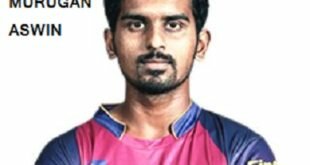What is DRS (Decision Review System) in Cricket
Cricket is one of game all over the world which is famous among the old and young’s. There are many rules which are followed in cricket and these rules are generally get update time to time. One of such rule is Umpire Decision Review.

What is DRS?
The Umpire Decision Review System generally called UDRS or DRS which is decision given by the third umpire decision using some latest technologies. This is way which is used in cricket from last few years, it is started from 2008. This rule is built in such a way that the batman or bowler who participated in a match can eligible to appeal against the On-field umpire, however, if the third umpires decision remains same with the On-field umpires means the entire teammates will get reduced with the existing appeal chance.
Batman or bowler can request to recheck the decision of on-field umpire’s decision because he/she can feel that the event which occurred might be not out and umpire give the wrong decision due to human error. So verify the decision of on pitch umpire, option of third umpire was generated
| S.No | Things Need to Know about DRS | Detailed Information |
| 1 | DRS/UDRS | Umpire Decision Review System |
| 2 | When it the system first tested? | In 2008 |
| 3 | When did the Official Launch of the System by ICC held? | 24th of November 2009 |
| 4 | When did the DRS/UDRS officially introduced in ODI matches | From the January of 2011. |
| 5 | Three Components used in DRS |
· Hawk-Eye
· Hot Spot · Snickometer · Ultra Edge |
This rule is implemented first time in New Zealand and Pakistan match at the University Oval in Dunedin in test match. After that ICC member feel that this is good way to avoid any kind of mistake made by on pitch umpire so after that The ICC initially made the Umpire Decision Review System compulsory in all international matches. In one day cricket it was implemented in 2011, but later made its elective in cricket, so that the system would only be used if both teams agree.
But again in 2012 International Cricket Council (ICC) make changes in this protocol, and make change in case of uncertainty condition when the ball hits the batsman’s pad. In 2016, the rules were adjusted once again, decreasing the margin of doubt.
The new Umpire Decision Review System protocol for reviewing not out for leg before wicket decisions came into effect on September. After that decision, cricket become harder for batsmen and somehow easy for the baler. But this Umpire Decision Review System changes the whole cricket.
Below are some of the protocol which are used by Umpire Decision Review System
Why need of the Umpire Decision Review?
Now the question is why need of Umpire Decision Review in cricket, it is due to solve decision on which batsman are not satisfied. Because of this decision batman get some relaxation and have some chances that he will stay on the pitch after the third umpire decision. Third umpire is included in the cricket so that if there is any mistake done by the on pitch umpire then it can be avoided by the third umpire decision, with the introduction of this DRS system, the involvement of third umpire in the game gets increased and also, third umpire can also make voluntary involvement if he/she suspects wrong with the on-field umpires decision.
Umpire decision review system Rule:
- On-field captain, or the batsman who are worried with the on-field decision can get the chance of challenging the umpire’s decision under this DRS system and third umpire will give the decision based the aid of modern technologies.
- On the other hand, On-field umpires would have power of reducing the number of DRS attempt if it gets failed. You challenge right – fine. But if your challenge is rejected then you lose one challenge. Note that only 2 challenges per innings are allowable for both the teams.
What has changed?
Under this Umpire Decision Review System protocol batman only get be out when ball must hit the pad for not-out decisions to be overturned has been increased. And the zone in which the ball tracking projection necessary to show more than half the ball hitting the stumps has also been better.
By how much has the area has increased for the bowler and batsman?
But in the current system the area is between the outside of off stump and the outside of leg stump. The bottom of the bails limit has not changed.
And before, for not out result to be upturned, the ball tracking projection desirable to show more than half the ball hitting the stumps among the middle of off stump and the center of leg stump, and from the bottom of the bails downwards. At the present, the area is from the outside of off stump and the outside of leg stump. The bottom of the bails limit has not changed.
In addition to, the width of the zone is approximate 3.8 centimeters: half a stump’s width of 1.9 centimeters on either side.
How will this force the game?
Under the previous Umpire Decision Review System conditions, for a not out because of leg before wicket decision to be upturned, the ball desirable to have hit the pad well in line with the stumps and the outcrop desirable to show the ball attractive much crashing into the stumps.
Under this DRS, more reviews of not out leg before wicket decisions, more on field decisions are being upturned and, in time, perhaps more leg before wicket appeals being upheld on the field.
Effect of this decision:
Umpire Decision Review System surely affects the international cricket. It gives some freedom to bowlers and put some limitation on the batsman. But batsman also feel secure to somewhat because if they feel that they are not out then they can ask to third umpire and then the third umpire will recheck the position of ball and batsman. So batsman will get some chances that he will be declared not out.
And bowler are in benefit because of Umpire Decision Review System because they get more zone for their balling and get more chances that they can easily out the batsman.
So in this way this protocol is helpful to both batsman and bowler and it is accepted by the international cricket all over the world. As after 2009, when this rule was first time tried there are many changes in this protocol but all these decision are taken in favor of cricket so that player both bowler and batman can play a healthy game.
Other Articles


